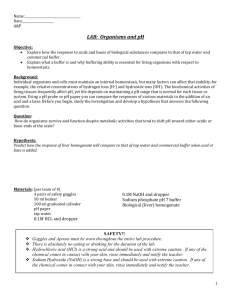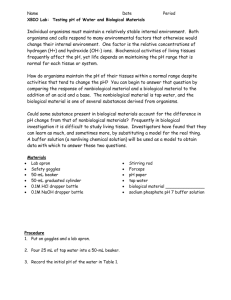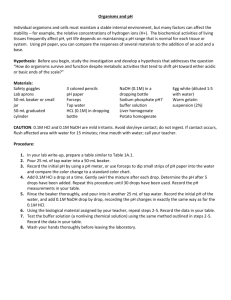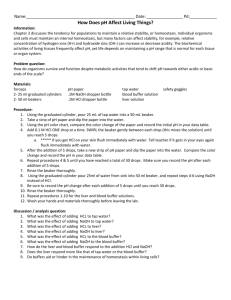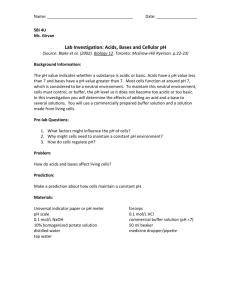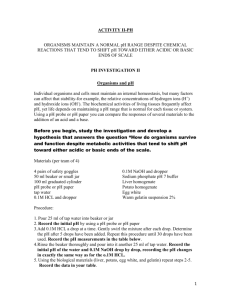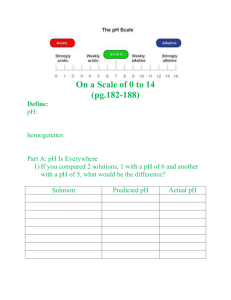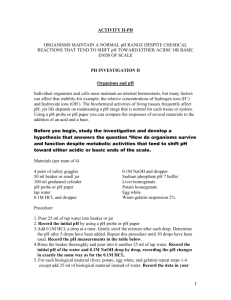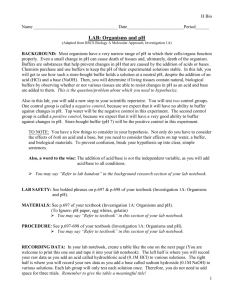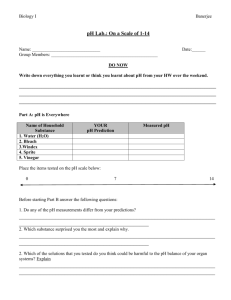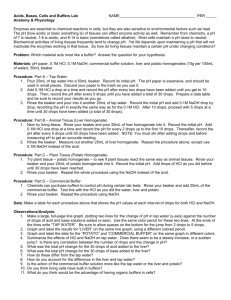Human Anatomy & Physiology
advertisement
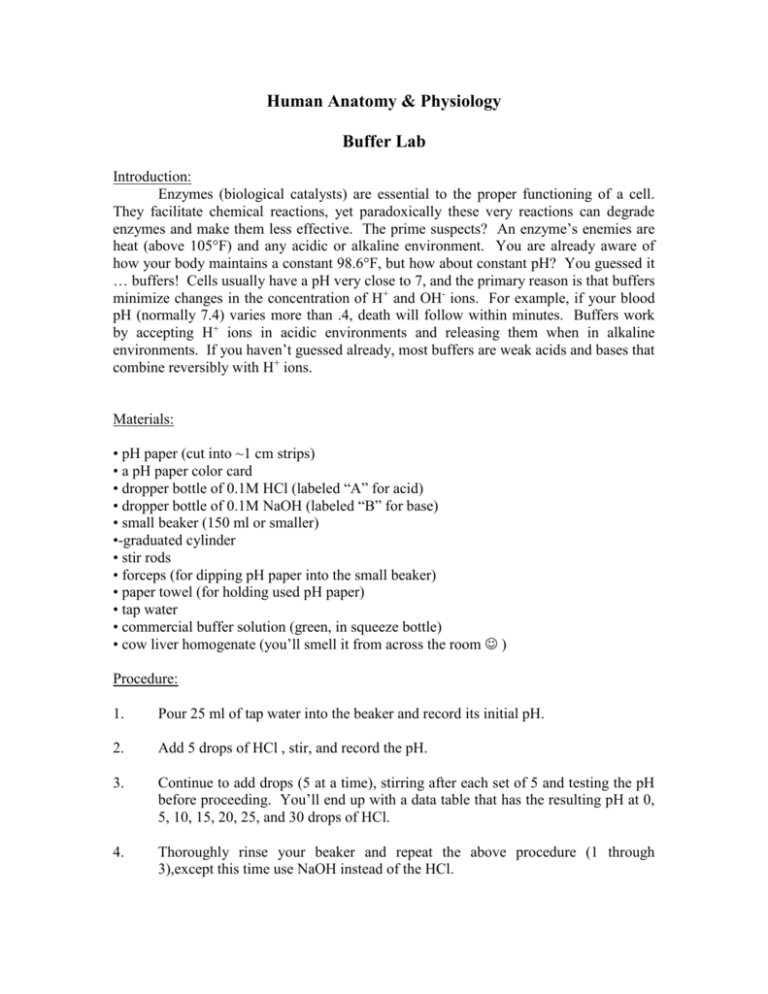
Human Anatomy & Physiology Buffer Lab Introduction: Enzymes (biological catalysts) are essential to the proper functioning of a cell. They facilitate chemical reactions, yet paradoxically these very reactions can degrade enzymes and make them less effective. The prime suspects? An enzyme’s enemies are heat (above 105°F) and any acidic or alkaline environment. You are already aware of how your body maintains a constant 98.6°F, but how about constant pH? You guessed it … buffers! Cells usually have a pH very close to 7, and the primary reason is that buffers minimize changes in the concentration of H+ and OH- ions. For example, if your blood pH (normally 7.4) varies more than .4, death will follow within minutes. Buffers work by accepting H+ ions in acidic environments and releasing them when in alkaline environments. If you haven’t guessed already, most buffers are weak acids and bases that combine reversibly with H+ ions. Materials: • pH paper (cut into ~1 cm strips) • a pH paper color card • dropper bottle of 0.1M HCl (labeled “A” for acid) • dropper bottle of 0.1M NaOH (labeled “B” for base) • small beaker (150 ml or smaller) •-graduated cylinder • stir rods • forceps (for dipping pH paper into the small beaker) • paper towel (for holding used pH paper) • tap water • commercial buffer solution (green, in squeeze bottle) • cow liver homogenate (you’ll smell it from across the room ) Procedure: 1. Pour 25 ml of tap water into the beaker and record its initial pH. 2. Add 5 drops of HCl , stir, and record the pH. 3. Continue to add drops (5 at a time), stirring after each set of 5 and testing the pH before proceeding. You’ll end up with a data table that has the resulting pH at 0, 5, 10, 15, 20, 25, and 30 drops of HCl. 4. Thoroughly rinse your beaker and repeat the above procedure (1 through 3),except this time use NaOH instead of the HCl. 5. Thoroughly rinse your beaker and repeat the above procedures (1 through 4), except this time use either 25 ml of liver homogenate or 25 ml of commercial buffer solution instead of tap water. 6. You should have 14 data points for tap water (7 for HCl, 7 for NaOH), 14 for liver homogenate, and 14 for the commercial buffer solution. Graphing: Create a line graph that utilizes the majority of the graph paper. The vertical axis will be pH and the horizontal axis with be # of drops added. Graph tap water first, using the same color pencil for the addition of acid and base. Note: You should have two diverging lines that for an acute, “V”. At the far end (30 drops) label each line “tap water”. Now do the same for the other two solutions. Label all axes, place numbers in appropriate positions along these axes, entitle the graph as a whole, and do anything else that you believe constitutes a competent graphical presentation of data. Analysis: - Please place your responses in your lab notebook. 1. Did any of the three samples have sudden jumps in pH, or was there a linear relationship between the addition of acid/base and pH? Explain why this is so. 2. How do you account for the difference between tap water and liver homogenate in terms of response to the addition of acid/base? 3. Did the acid and base change the pH of the liver homogenate equally, or was there a difference? Explain why this is so. 4. Compare the response of the commercial buffer to the results from the tap water and liver homogenate. 5. Summarize your results in an exhaustive, yet concise, paragraph.
